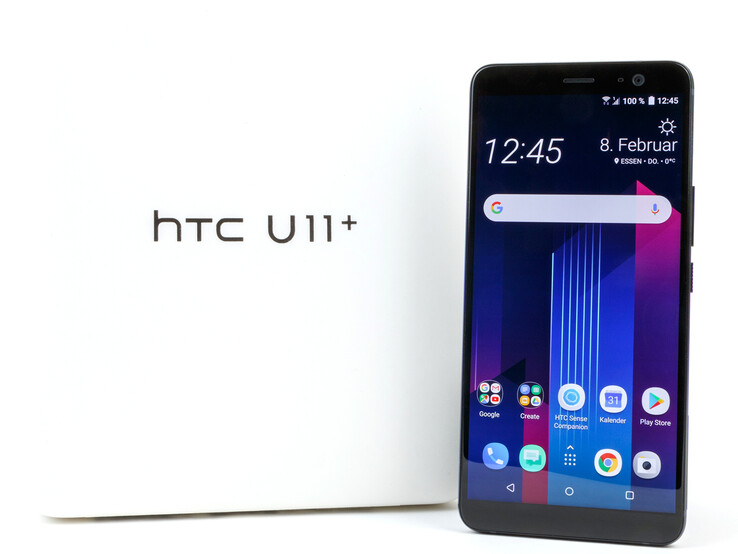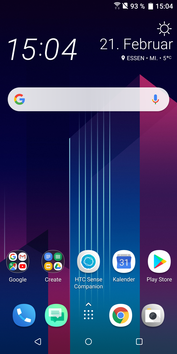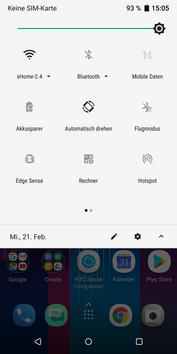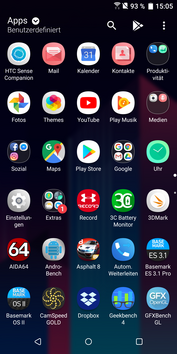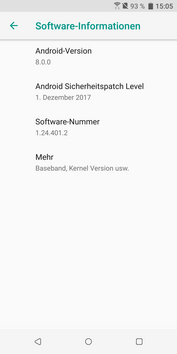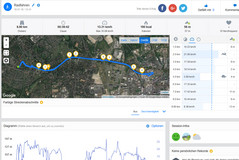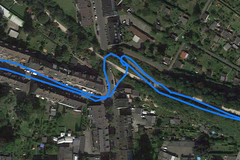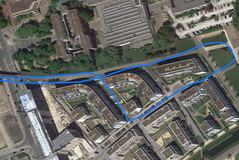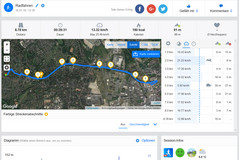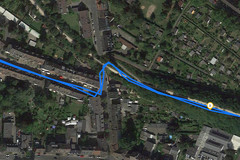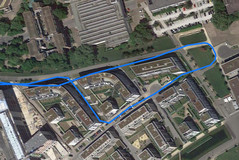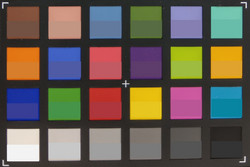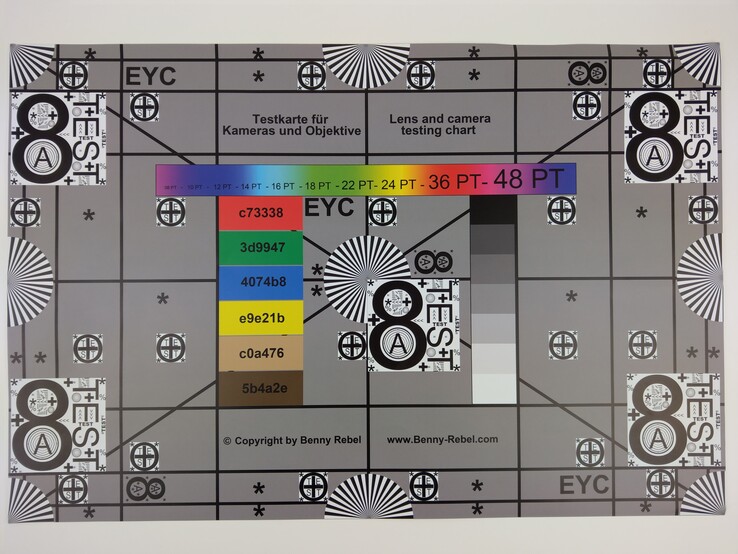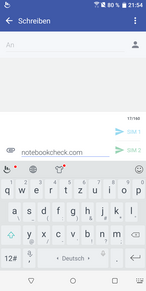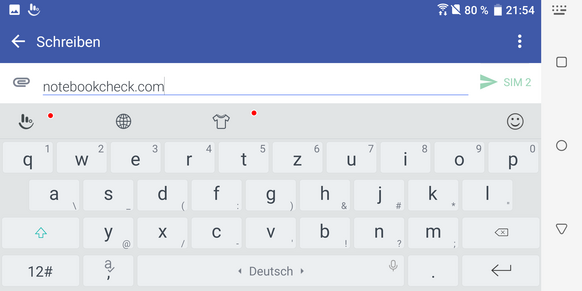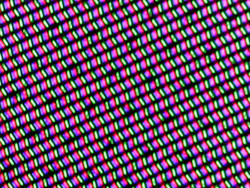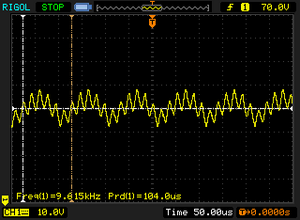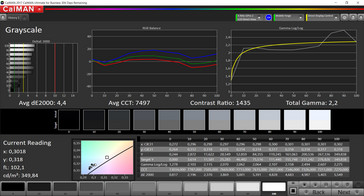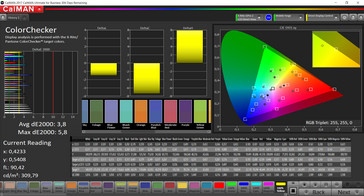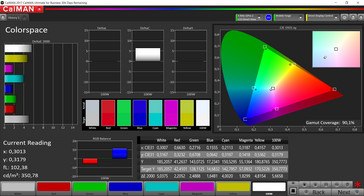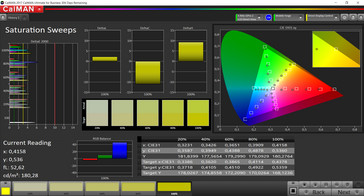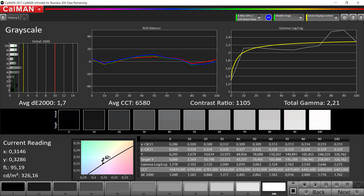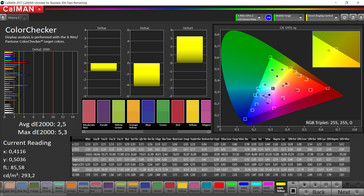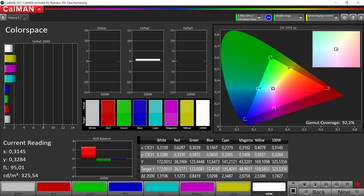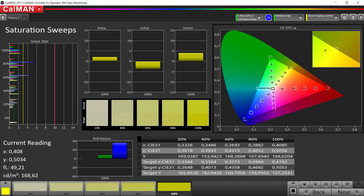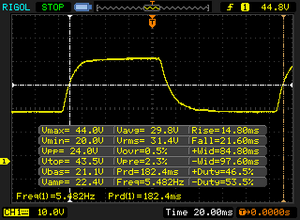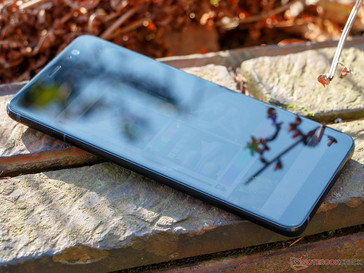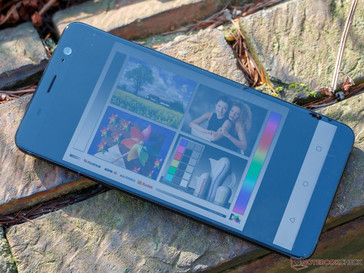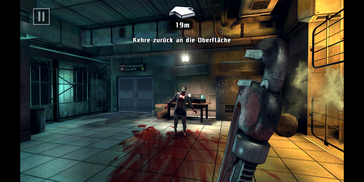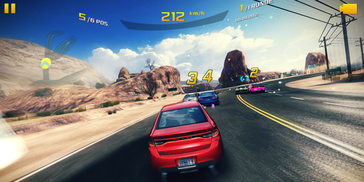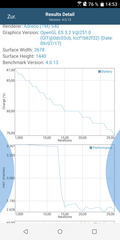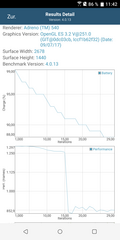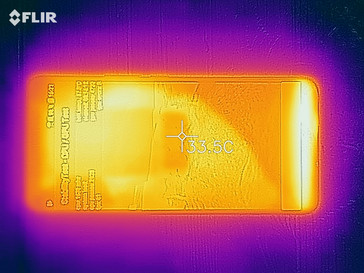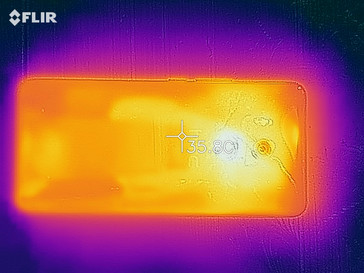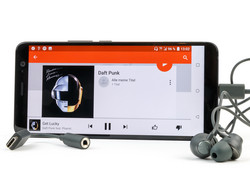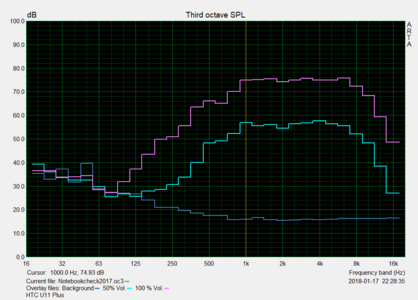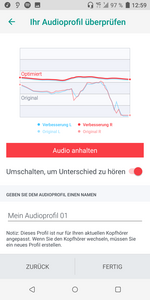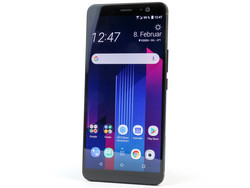HTC U11 Plus Smartphone Review
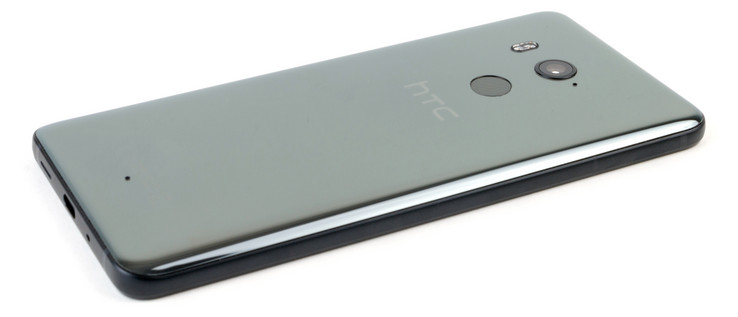
With the U11+ (Plus), HTC introduces its first smartphone with a screen with a 2:1 aspect ratio. The display measures 6 inches and is based on the new SLCD6 technology. For its SoC, the U11 Plus uses the Snapdragon 835, just like the older U11 model did. However, the U11 Plus comes with 6 GB of RAM and its internal storage capacity has been increased to a generous 128 GB, and its storage space is still expandable. There are no big changes in terms of the camera. HTC still relies on a solution with a single lens. The battery capacity, on the other hand, has been increased by about 30% to 3930 mAh. The rest of the hardware is identical to that of the smaller U11.
The competition stems chiefly from the well-known brands. Besides the top dogs like the Samsung Galaxy S8 Plus and the Apple iPhone X, other devices such as the Huawei Mate 10 Pro, the LG V30, the Google Pixel 2 XL and the OnePlus 5T can be seen as the main competitors of the U11 Plus.
Case
It is noticeable right away that the HTC U11 Plus is thicker than the smaller model, which can be attributed to the larger battery. The design height of the U11 Plus has increased to 8.5 millimeters (0.335 inches), but we actually measured a height of 9.05 millimeters (0.356 in). Because the camera bump no longer protrudes out of the case for about half a millimeter (0.45mm/0.018 in), the U11 Plus is actually thinner than the U11 (9.8 mm/0.386 in) at its thickest. In terms of color variants, only a gray model is available in Germany right now. It has a reflective glass surface and its hue shifts depending on the viewing angle.
The build quality of the HTC U11 is really good. All the edges and joints are smooth and tight, except for the back glass cover, which, in our view, has too much of a gap. Such gaps tend to devolve into dirt magnets over time. The device manages to withstand our bending attempts with relative ease. However, when we try to bend the smartphone, it does produce a creaking sound. In order to induce a rippling effect on the LCD display, a lot of pressure will have to be applied to the panel.
Furthermore, the device is water and dust resistant. The U11 Plus has an IP68 rating. Therefore, it can be submerged in fresh water for a while without being damaged.
Connectivity
The Micro SD card slot of the HTC U11 Plus supports all current SD card capacities, which currently top out at 400 GB. The optional storage can also serve as internal storage.
The USB port is a Type-C port. It operates at USB 3.1 (Gen 1) speeds. Moreover, this port can also be used to connect the device to an external display (for this you will need an optional HDMI or DisplayPort adapter). Audio signals are also carried over the USB port; in order to connect a 3.5-mm audio jack to the smartphone you will need to use the included adapter.
Media files can be shared wirelessly via Bluetooth 5.0, DLNA, AirPlay, Miracast or Wi-Fi Direct. For fast device coupling or payment, the smartphone supports NFC.
Software
At the time of this review, the HTC U11 Plus runs the latest version of Android (8.0 Oreo). The security patches, which were installed on December 1st, are still current.
The HTC U11 comes with a few proprietary apps such as Sense Companion, which we discussed in great detail in our review of the HTC U Ultra. The preinstalled apps include Facebook, Instagram and Facebook Messenger. They cannot be deleted, but they can be disabled. The same applies to most of the Google apps.
Communication and GPS
The HTC U11 Plus uses the fast LTE Category 15 (maximum speed of 800 MBit/s) to surf the Internet. Surprisingly, this is somewhat slower than the sibling model, which can utilize the Snapdragon X16 Modem to the full extent, which makes it up to 25% faster. In terms of reception, we have nothing to complain about. The device has a hybrid SIM card slot, which can take either a Nano SIM card or an SD card (second slot in the Sim tray). The HTC U11 Plus covers a wide range of spectrum, but some competing devices offer a wider range. The U11 Plus is not a “world phone”.
The smartphone is really fast in Wi-Fi networks. However, when using our Linksys EA 8500 reference router, it is beaten by the U11. We expected better results from a smartphone that supports IEEE-802.11 Standards a/b/g/n/ac and MU-MIMO technology. However, the reception quality is very good and the transfer rates stay at a high level even some distance away from the router.
The HTC U11 Plus uses the following navigation systems for geolocation: GPS, Glonass and BeiDou. Outside, the smartphone takes about 2 seconds to get your location and exhibits a margin of error of 4 meters (~13 ft). At the cellar window, the device takes 21 seconds to acquire a location. Here, the margin for error rises up to 8 meters (~26 ft), meaning that the device is still very accurate, comparatively speaking.
In order to assess the accuracy of geolocation in everyday use, we take the HTC U11 Plus on a short bike ride. Here, the bike computer, Garmin Edge 500, serves as the comparison device. At the end of the ride, there is a 20-meter (~66 ft) discrepancy between the two devices. Upon closer examination of the travel route, it emerges that the smartphone does almost as well as the somewhat more accurate navigator, which means that the phone does its job really well.
Telephony and Call Quality
The phone app of the HTC U11 Plus does not differ too much from the standard Android app. All it brings to the table over the default app is a tab for contact groups. In addition, the device supports modern communication standards such as VoLTE and Wi-Fi Calling.
The call quality of the U11 Plus is identical to that of the smaller brother, it is very nice on the ear and voices are clear on either end of the call. The speaker is not overly loud, but it is loud enough to enable the user to comfortably converse in quiet environments. The included headset belongs to the better specimens of its kind and actually supports active noise control. It works really well in day-to-day use. However, the necessary “cancellation” noise is quite audible during cuts and transitions, and it takes a while for the noise to be dampened in completely silent environments.
Camera
The HTC U11 Plus has the same camera as the older sibling model. The front-facing camera has a resolution of 8 MP. In good lighting conditions, the camera takes good shots and is suitable for selfies. A beauty mode is provided, but there is no portrait mode.
The main camera has a resolution of 12 MB and is very light sensitive, and this is why it can take very good pictures even in low-light conditions. In this department, it does better than the iPhone X and the image, actually, looks brighter than that of the Pixel 2. However, the Google smartphone provides more detailed pictures than the HTC U11 Plus.
In good lighting conditions, the review device shines with great image quality. However, the image lacks a little in terms of details. The competition is a touch better, which is, in itself, high praise. In day-to-day use, the HTC U11 Plus delivers a great picture quality and impresses with its precise and fast auto-focus. However, we do reserve some criticism for the camera app, which still offers very few customization options.
In the best case, videos can be recorded in Ultra HD (4K at 30 FPS). Here, the picture quality is also very good.
Under controlled lighting condition, we subject the main camera of the HTC U11 Plus to further tests. We use ColorChecker Passport to examine the color accuracy of the image sensor. The white balance is selected as “warm” by the utility. The dark skin tones are somewhat brightened, whereas lighter skin becomes slightly reddened. The rest of the colors become brighter and more saturated. All in all, we are very pleased with the color reproduction.
In our test chart, we do like the great image accuracy in the centre of the image, where no details are left out, which makes the shot appear very detailed. Only the edges of the objects, which are displayed against dark backgrounds, are a little fuzzy. However, the sharpness declines at the edges of the image, which is neither unusual nor particularly strongly pronounced.
Accessories and Warranty
The box contains the following: A modular fast-charging power adapter (5 V/2.5 A; 9 V/1.7 A), an appropriate USB cable (Type-A to Type-C), a SIM tool, a transparent plastic case, a cleaning cloth, a Type-C to 3.5-mm jack adapter as well as the HTC USonic headset.
The device comes with a 2-year warranty. Please see our Guarantees, Return Policies and Warranties FAQ for country-specific information.
Input Devices & Handling
The capacitive touchscreen of the HTC U11 Plus is protected by Corning Gorilla Glass 5 and can register up to 10 inputs at the same time. The screen surface is very smooth, and the inputs are registered quickly in all areas of the display. TouchPal is preinstalled as the default virtual keyboard. However, it can be replaced with a number of other keyboards from the Google Play Store.
The “Edge Sense” feature is included again. This feature allows users to carry out a predefined action by squeezing the edges of the smartphone. The actions you can perform by squeezing the phone include launching the camera, the flashlight or the voice recorder, managing Wi-Fi hotspots or opening your favorite app. The pressure sensitivity is adjustable. However, it does require some fine-tuning, because, otherwise, it might require too much or too little force to activate. In extreme cases, the simple act of lifting the phone up can trigger the “Edge Sense” action. Actions can also be performed in compatible apps via Edge Sense; this works very well despite still being in beta testing.
Display
The HTC U11 Plus not only gets a different aspect ratio, but also an improved panel. The smartphone uses the sixth generation of the Super LCD technology for the first time. Unfortunately, “newer” does not always mean, “better”. The resolution has been increased because of the shift from 16:9 to 2:1, and now it amounts to 2880x1440, which still makes for a high pixel density. The brightness is distributed very evenly, but it is quite low. Here, HTC loses its claim to fame and delivers surprisingly bad results. With 371 cd/m², the display can be described as dim when compared to other competing devices. However, it is still quite usable in closed rooms.
When displaying our practically oriented test pattern of evenly distributed black and white squares, the display brightness in the center of the screen falls down to 275 cd/m². We observed similar behavior with the black values. When the smartphone’s screen is filled with black, the black value is 0.21 cd/m². When the smartphone displays the APL50 test pattern, the black value increases slightly to 0.24 cd/m². The superb black value gives the U11 Plus a very good contrast ratio. That said, when displaying the APL50 pattern, the contrast ratio falls down to 1145:1.
Furthermore, HTC uses PWM for brightness control, which we observed at about 33% brightness and below. Nevertheless, the frequency is very high, which means that not many people will experience problems because of it.
| |||||||||||||||||||||||||
Brightness Distribution: 90 %
Center on Battery: 361 cd/m²
Contrast: 1719:1 (Black: 0.21 cd/m²)
ΔE Color 2.5 | 0.5-29.43 Ø5
ΔE Greyscale 1.7 | 0.57-98 Ø5.3
Gamma: 2.21
| HTC U11 Plus Super LCD 6, 2880x1440, 6.00 | HTC U11 Super LCD5, 2560x1440, 5.50 | Samsung Galaxy S8 Plus Super AMOLED, 2960x1440, 6.20 | Huawei Mate 10 Pro OLED, 2160x1080, 6.00 | Apple iPhone X Super AMOLED, 2436x1125, 5.80 | LG V30 OLED, 2880x1440, 6.00 | OnePlus 5T AMOLED, 2160x1080, 6.01 | Google Pixel 2 XL P-OLED, 2880x1440, 6.00 | |
|---|---|---|---|---|---|---|---|---|
| Screen | -8% | 32% | 30% | 40% | -51% | 7% | -9% | |
| Brightness middle | 361 | 482 34% | 560 55% | 629 74% | 600 66% | 432 20% | 425 18% | 415 15% |
| Brightness | 356 | 472 33% | 562 58% | 636 79% | 606 70% | 428 20% | 423 19% | 420 18% |
| Brightness Distribution | 90 | 90 0% | 93 3% | 94 4% | 94 4% | 87 -3% | 92 2% | 87 -3% |
| Black Level * | 0.21 | 0.33 -57% | ||||||
| Contrast | 1719 | 1461 -15% | ||||||
| Colorchecker dE 2000 * | 2.5 | 3.2 -28% | 1.7 32% | 1.7 32% | 1.2 52% | 4.18 -67% | 2.1 16% | 2.7 -8% |
| Colorchecker dE 2000 max. * | 5.3 | 5.4 -2% | 3.4 36% | 3.6 32% | 3 43% | 8.53 -61% | 3.4 36% | 4.3 19% |
| Greyscale dE 2000 * | 1.7 | 2.2 -29% | 1.6 6% | 2.4 -41% | 1.6 6% | 5.3 -212% | 2.5 -47% | 3.3 -94% |
| Gamma | 2.21 100% | 2.22 99% | 2.13 103% | 2.15 102% | 2.23 99% | 2.33 94% | 2.32 95% | 2.36 93% |
| CCT | 6580 99% | 6581 99% | 6435 101% | 6337 103% | 6707 97% | 7487 87% | 6455 101% | 6787 96% |
| Color Space (Percent of AdobeRGB 1998) | 81.57 | |||||||
| Color Space (Percent of sRGB) | 99.87 |
* ... smaller is better
Screen Flickering / PWM (Pulse-Width Modulation)
| Screen flickering / PWM detected | 9615 Hz | ≤ 33 % brightness setting | |
The display backlight flickers at 9615 Hz (worst case, e.g., utilizing PWM) Flickering detected at a brightness setting of 33 % and below. There should be no flickering or PWM above this brightness setting. The frequency of 9615 Hz is quite high, so most users sensitive to PWM should not notice any flickering. In comparison: 53 % of all tested devices do not use PWM to dim the display. If PWM was detected, an average of 17933 (minimum: 5 - maximum: 3846000) Hz was measured. | |||
We use a photo-spectrometer and CalMAN software to analyze the color accuracy of the SLCD6 panel in the HTC U11. Here, HTC pulls out all the stops and delivers superb results. This applies to both the colors and the grayscale. DCI-P3 is the default color profile. However, here, the deviations are a bit stronger and the grayscale exhibits a slight bluish cast, which also makes blue colors appear somewhat oversaturated. This does not prove to be annoying at any point, though. The colors are reproduced even more accurately with the sRGB color profile. This color space is somewhat smaller, but the bluish cast is gone and deviations for such colors as red and blue are so small that they are imperceptible to the human eye.
Display Response Times
| ↔ Response Time Black to White | ||
|---|---|---|
| 33.6 ms ... rise ↗ and fall ↘ combined | ↗ 18.8 ms rise | |
| ↘ 14.8 ms fall | ||
| The screen shows slow response rates in our tests and will be unsatisfactory for gamers. In comparison, all tested devices range from 0.1 (minimum) to 240 (maximum) ms. » 89 % of all devices are better. This means that the measured response time is worse than the average of all tested devices (21.5 ms). | ||
| ↔ Response Time 50% Grey to 80% Grey | ||
| 36.4 ms ... rise ↗ and fall ↘ combined | ↗ 14.8 ms rise | |
| ↘ 21.6 ms fall | ||
| The screen shows slow response rates in our tests and will be unsatisfactory for gamers. In comparison, all tested devices range from 0.2 (minimum) to 636 (maximum) ms. » 46 % of all devices are better. This means that the measured response time is similar to the average of all tested devices (33.8 ms). | ||
Outside, the screen of the HTC U11 Plus does not shine. Its screen surface is very “shiny”, though. The Corning Gorilla Glass 5 reflects light very well, which is going to make reading screen content very difficult on sunny days, especially when you take into consideration the low brightness of the display. The good contrast ratio does not change anything here.
The HTC U11 Plus has very stable viewing angles. At acute angles, the brightness drops only slightly and the colors do not become distorted at any viewing angle. When viewed from the side, the screen content becomes a little warmer. However, there is no clouding to be seen on our review device.
Performance
The HTC U11 Plus uses a Qualcomm Snapdragon 835 with 6 GB of LPDDR4x RAM. It is one of the fastest SoCs on the market. The integrated Adreno 540 serves as the graphics processor, which pretty much guarantees great performance.
The benchmarks confirm this. The U11 Plus achieves outstanding results, above all, in the system benchmarks. In AnTuTu v6, it is, actually, the fastest Android device that we have ever benchmarked and is beaten only by the Apple iPhone X. Subjectively, HTC’s UI is very responsive and we did not observe any stuttering during our review.
The rest of the benchmarks deliver similarly high results. There are no abnormalities to report.
| AnTuTu v6 - Total Score (sort by value) | |
| HTC U11 Plus | |
| Huawei Mate 10 Pro | |
| Apple iPhone X | |
| LG V30 | |
| Google Pixel 2 XL | |
| OnePlus 5T | |
| HTC U11 | |
| Samsung Galaxy S8 Plus | |
| Motorola Moto Z2 Force | |
| PCMark for Android | |
| Work performance score (sort by value) | |
| HTC U11 Plus | |
| Huawei Mate 10 Pro | |
| LG V30 | |
| Google Pixel 2 XL | |
| OnePlus 5T | |
| HTC U11 | |
| Samsung Galaxy S8 Plus | |
| Motorola Moto Z2 Force | |
| Work 2.0 performance score (sort by value) | |
| HTC U11 Plus | |
| Huawei Mate 10 Pro | |
| LG V30 | |
| Google Pixel 2 XL | |
| OnePlus 5T | |
| HTC U11 | |
| Samsung Galaxy S8 Plus | |
| Motorola Moto Z2 Force | |
| GFXBench (DX / GLBenchmark) 2.7 | |
| T-Rex Onscreen (sort by value) | |
| HTC U11 Plus | |
| Huawei Mate 10 Pro | |
| Apple iPhone X | |
| LG V30 | |
| Google Pixel 2 XL | |
| OnePlus 5T | |
| HTC U11 | |
| Samsung Galaxy S8 Plus | |
| Motorola Moto Z2 Force | |
| 1920x1080 T-Rex Offscreen (sort by value) | |
| HTC U11 Plus | |
| Huawei Mate 10 Pro | |
| Apple iPhone X | |
| LG V30 | |
| Google Pixel 2 XL | |
| OnePlus 5T | |
| HTC U11 | |
| Samsung Galaxy S8 Plus | |
| Motorola Moto Z2 Force | |
| GFXBench 3.0 | |
| on screen Manhattan Onscreen OGL (sort by value) | |
| HTC U11 Plus | |
| Huawei Mate 10 Pro | |
| Apple iPhone X | |
| LG V30 | |
| Google Pixel 2 XL | |
| OnePlus 5T | |
| HTC U11 | |
| Samsung Galaxy S8 Plus | |
| Motorola Moto Z2 Force | |
| 1920x1080 1080p Manhattan Offscreen (sort by value) | |
| HTC U11 Plus | |
| Huawei Mate 10 Pro | |
| Apple iPhone X | |
| LG V30 | |
| Google Pixel 2 XL | |
| OnePlus 5T | |
| HTC U11 | |
| Samsung Galaxy S8 Plus | |
| Motorola Moto Z2 Force | |
| GFXBench 3.1 | |
| on screen Manhattan ES 3.1 Onscreen (sort by value) | |
| HTC U11 Plus | |
| Huawei Mate 10 Pro | |
| Apple iPhone X | |
| LG V30 | |
| Google Pixel 2 XL | |
| OnePlus 5T | |
| HTC U11 | |
| Samsung Galaxy S8 Plus | |
| Motorola Moto Z2 Force | |
| 1920x1080 Manhattan ES 3.1 Offscreen (sort by value) | |
| HTC U11 Plus | |
| Huawei Mate 10 Pro | |
| Apple iPhone X | |
| LG V30 | |
| Google Pixel 2 XL | |
| OnePlus 5T | |
| HTC U11 | |
| Samsung Galaxy S8 Plus | |
| Motorola Moto Z2 Force | |
| Lightmark - 1920x1080 1080p (sort by value) | |
| HTC U11 Plus | |
| Huawei Mate 10 Pro | |
| Google Pixel 2 XL | |
| HTC U11 | |
| Samsung Galaxy S8 Plus | |
| Basemark X 1.1 | |
| Medium Quality (sort by value) | |
| Huawei Mate 10 Pro | |
| HTC U11 | |
| Samsung Galaxy S8 Plus | |
| High Quality (sort by value) | |
| Huawei Mate 10 Pro | |
| HTC U11 | |
| Samsung Galaxy S8 Plus | |
| Basemark ES 3.1 / Metal - offscreen Overall Score (sort by value) | |
| HTC U11 Plus | |
| Huawei Mate 10 Pro | |
| Apple iPhone X | |
| Google Pixel 2 XL | |
| HTC U11 | |
| Samsung Galaxy S8 Plus | |
| Epic Citadel - Ultra High Quality (sort by value) | |
| Huawei Mate 10 Pro | |
| HTC U11 | |
| Samsung Galaxy S8 Plus | |
The HTC U11 Plus carries out the browser benchmarks using Google Chrome (version 63). Subjectively, it performs quite well, but it does not hand in stelar results, though.
| JetStream 1.1 - Total Score | |
| Apple iPhone X (IOS 11.1.1) | |
| HTC U11 (Chrome 58) | |
| Motorola Moto Z2 Force (Chrome 63.0.3239.111) | |
| OnePlus 5T (Chrome 63) | |
| HTC U11 Plus (Chrome 63) | |
| Google Pixel 2 XL (Chrome 62) | |
| Samsung Galaxy S8 Plus (Samsung Browser 5.2) | |
| Huawei Mate 10 Pro (Chrome 61) | |
| LG V30 (Chrome 62) | |
| Octane V2 - Total Score | |
| Apple iPhone X (IOS 11.1.2) | |
| Samsung Galaxy S8 Plus (Samsung Browser 5.2) | |
| Motorola Moto Z2 Force (Chrome 63.0.3239.111) | |
| OnePlus 5T (Chrome 63) | |
| HTC U11 (Chrome 58) | |
| HTC U11 Plus (Chrome 63) | |
| Google Pixel 2 XL (Chrome 62) | |
| LG V30 (Chrome 62) | |
| Huawei Mate 10 Pro (Chrome 61) | |
| Mozilla Kraken 1.1 - Total | |
| LG V30 (Chrome 62) | |
| Huawei Mate 10 Pro (Chrome 61) | |
| Google Pixel 2 XL (Chrome 62) | |
| Motorola Moto Z2 Force (Chrome 63.0.3239.111) | |
| HTC U11 Plus (Chrome 63) | |
| OnePlus 5T (Chrome 63) | |
| HTC U11 (Chrome 58) | |
| Samsung Galaxy S8 Plus (Samsung Browser 5.2) | |
| Apple iPhone X (IOS 11.1.2) | |
| WebXPRT 2015 - Overall | |
| Apple iPhone X (Safari Mobile 11.0) | |
| Google Pixel 2 XL (Chrome 62) | |
| OnePlus 5T (Chrome 63) | |
| HTC U11 Plus (Chrome 63) | |
| HTC U11 (Chrome 58) | |
| Motorola Moto Z2 Force (Chrome 63.0.3239.111) | |
| Huawei Mate 10 Pro (Chrome 61) | |
| Samsung Galaxy S8 Plus (Samsung Browser 5.2) | |
| LG V30 (Chrome 62) | |
* ... smaller is better
With 128 GB of UFS 2.1 memory, the HTC U11 Plus offers plenty of storage space. As expected, the transfer speeds are very fast. Those who need more storage space can put an SD card in the device. We examine the transfer speeds of the SD card reader using the reference SD card Toshiba Exceria M501. The transfer rates are very good. However, our reference SD card fails to reach its full potential. Here, the competing devices offer somewhat higher speeds.
| HTC U11 Plus | Samsung Galaxy S8 Plus | LG V30 | Motorola Moto Z2 Force | Honor View 10 | |
|---|---|---|---|---|---|
| AndroBench 3-5 | -14% | -29% | -4% | 11% | |
| Sequential Read 256KB | 728 | 788 8% | 669 -8% | 696 -4% | 810 11% |
| Sequential Write 256KB | 207.9 | 194.2 -7% | 193.2 -7% | 213.6 3% | 194.3 -7% |
| Random Read 4KB | 132.4 | 127.2 -4% | 78.2 -41% | 148.8 12% | 144.3 9% |
| Random Write 4KB | 135.7 | 15.27 -89% | 10.21 -92% | 78.6 -42% | 160 18% |
| Sequential Read 256KB SDCard | 75.4 ? | 71.1 ? -6% | 62.8 -17% | 77.4 ? 3% | 81 ? 7% |
| Sequential Write 256KB SDCard | 51.3 ? | 57.2 ? 12% | 47.2 -8% | 54.7 ? 7% | 65.1 ? 27% |
Games
The strong SoC in the HTC U11 Plus can run graphically demanding video games. The Adreno 540 packs quite a punch and supports all the latest APIs. In titles such as "Asphalt 8", the review device manages to hand in a good 30 FPS (here, the frame rate is capped at 30 FPS). "Dead Trigger 2" runs very smoothly as well.
The speakers set the mood while gaming, and the device is quite easy to hold. However, the motion sensor could have been a bit more sensitive, so that you would not have to expend so much effort to steer while playing racing video games.
| Asphalt 8: Airborne | |||
| Settings | Value | ||
| high | 29 fps | ||
| very low | 30 fps | ||
| Dead Trigger 2 | |||
| Settings | Value | ||
| high | 59 fps | ||
Emissions
Temperature
The surface temperatures of the HTC U11 Plus are quite moderate. When idle, the device does get noticeably warm, but only minimally so. Under load, the case temperatures on the front of the device are the highest. That being said, they do not climb too high.
We use GFXBench’s battery test to see how the SoC holds up under extreme loads. We run it three times in a row and monitor not only the battery level, but also the frame rates. In the T-Rex benchmark, the smartphone remains stable for a relatively long time before the performance drops by about 20% in the middle of the benchmark. The device exhibits similar behavior in the Manhattan portion of the benchmark, only this time the performance drops even lower.
(+) The maximum temperature on the upper side is 36.8 °C / 98 F, compared to the average of 35 °C / 95 F, ranging from 21.9 to 56 °C for the class Smartphone.
(+) The bottom heats up to a maximum of 36.1 °C / 97 F, compared to the average of 33.8 °C / 93 F
(+) In idle usage, the average temperature for the upper side is 31.8 °C / 89 F, compared to the device average of 32.7 °C / 91 F.
Speakers
HTC relies on a dual speaker set-up again. We like the sound quality of the U11 Plus better than that of the U11. The U11 Plus sounds more balanced. If you are not into filling entire rooms with sound, then you are going to be more than happy with the HTC U11 Plus. Nevertheless, the HTC U11 Plus fails to regain its reference status.
The included USonic headset delivers a great audio quality. Manufacturers do not include such good products free of charge very often. The sound is dynamic and has a lot of punch. The sound level of each headphone is adjusted to the ear canal on an individual basis, which leads to an audible difference between the right and the left headphones. On a positive note, the headset supports Hi-Res audio. Unfortunately, what we have here is a headset that is connected via USB Type-C. The HTC U11 Plus does not have an audio jack. The necessary adapter for such earphones is included in the box. However, it is absolutely useless when the phone is charging. If you want to listen to music in this case, you will have to get a hold of a pair of Bluetooth headphones. In addition, because of support for aptX, such headphones are going to sound really good with compatible devices.
HTC U11 Plus audio analysis
(+) | speakers can play relatively loud (86 dB)
Bass 100 - 315 Hz
(-) | nearly no bass - on average 23.6% lower than median
(±) | linearity of bass is average (9.1% delta to prev. frequency)
Mids 400 - 2000 Hz
(+) | balanced mids - only 4.8% away from median
(+) | mids are linear (5.5% delta to prev. frequency)
Highs 2 - 16 kHz
(±) | higher highs - on average 5.5% higher than median
(+) | highs are linear (2.9% delta to prev. frequency)
Overall 100 - 16.000 Hz
(±) | linearity of overall sound is average (20.6% difference to median)
Compared to same class
» 29% of all tested devices in this class were better, 9% similar, 62% worse
» The best had a delta of 12%, average was 38%, worst was 134%
Compared to all devices tested
» 50% of all tested devices were better, 8% similar, 42% worse
» The best had a delta of 4%, average was 25%, worst was 134%
Samsung Galaxy S8 Plus audio analysis
(+) | speakers can play relatively loud (82.9 dB)
Bass 100 - 315 Hz
(-) | nearly no bass - on average 21.5% lower than median
(±) | linearity of bass is average (12% delta to prev. frequency)
Mids 400 - 2000 Hz
(±) | higher mids - on average 5.2% higher than median
(+) | mids are linear (3.8% delta to prev. frequency)
Highs 2 - 16 kHz
(±) | higher highs - on average 5.2% higher than median
(±) | linearity of highs is average (7.7% delta to prev. frequency)
Overall 100 - 16.000 Hz
(±) | linearity of overall sound is average (22.2% difference to median)
Compared to same class
» 40% of all tested devices in this class were better, 7% similar, 53% worse
» The best had a delta of 12%, average was 38%, worst was 134%
Compared to all devices tested
» 59% of all tested devices were better, 7% similar, 34% worse
» The best had a delta of 4%, average was 25%, worst was 134%
Google Pixel 2 XL audio analysis
(+) | speakers can play relatively loud (88.4 dB)
Bass 100 - 315 Hz
(-) | nearly no bass - on average 28.1% lower than median
(±) | linearity of bass is average (9.5% delta to prev. frequency)
Mids 400 - 2000 Hz
(+) | balanced mids - only 3.2% away from median
(+) | mids are linear (5.5% delta to prev. frequency)
Highs 2 - 16 kHz
(+) | balanced highs - only 3.1% away from median
(+) | highs are linear (4.2% delta to prev. frequency)
Overall 100 - 16.000 Hz
(±) | linearity of overall sound is average (19.6% difference to median)
Compared to same class
» 23% of all tested devices in this class were better, 8% similar, 69% worse
» The best had a delta of 12%, average was 38%, worst was 134%
Compared to all devices tested
» 44% of all tested devices were better, 7% similar, 49% worse
» The best had a delta of 4%, average was 25%, worst was 134%
Battery Life
Energy Consumption
The power draw of the HTC U11 Plus is very low and leaves no room for criticism. When combined with the large 3920 mAh battery, this should result in good battery life. Under load, the energy consumption rises up to 9 watts, which is not surprising considering the power of the SoC.
The smartphone supports Quick Charge 3.0 and takes 118 minutes to get a full charge. This is very fast, but not as fast as the Huawei Mate 10 Pro, which takes less than 90 minutes to reach a full charge.
| Off / Standby | |
| Idle | |
| Load |
|
| HTC U11 Plus 3930 mAh | HTC U11 3000 mAh | Samsung Galaxy S8 Plus 3500 mAh | OnePlus 5T 3300 mAh | Google Pixel 2 XL 3520 mAh | Huawei Mate 10 Pro 4000 mAh | |
|---|---|---|---|---|---|---|
| Power Consumption | -16% | 10% | 6% | -32% | -2% | |
| Idle Minimum * | 0.51 | 0.73 -43% | 0.68 -33% | 0.58 -14% | 1.28 -151% | 0.85 -67% |
| Idle Average * | 1.62 | 1.96 -21% | 1.13 30% | 1.44 11% | 1.87 -15% | 1.15 29% |
| Idle Maximum * | 1.87 | 1.98 -6% | 1.16 38% | 1.53 18% | 1.89 -1% | 1.23 34% |
| Load Average * | 3.92 | 4.82 -23% | 4.69 -20% | 3.17 19% | 3.73 5% | 4.12 -5% |
| Load Maximum * | 8.27 | 7.15 14% | 5.24 37% | 8.54 -3% | 8.08 2% | 8.42 -2% |
* ... smaller is better
Battery Life
Thanks to an improved power draw and a larger battery, the HTC U11 Plus lasts noticeably longer than the U11. Nevertheless, we were still expecting a longer battery life. When compared to the competition, only the iPhone X delivers worse battery runtimes, and not in all areas. In our video playback test, the smartphone delivers somewhat better results. This is probably because the test is carried out with the display brightness set to 150 cd/m².
In our Wi-Fi test, the U11 Plus does not do very well. It barely manages to outlast the competitors with battery capacities smaller than 3000 mAh. The Huawei Mate 10 Pro, which has a similarly sized battery, crushes the competition in every area and reigns supreme.
Nevertheless, in day-to-day use, the HTC U11 Plus still has enough power to last you an entire day. Especially since, the HTC U11 Plus has all the power saving modes that we originally saw in the U11.
| HTC U11 Plus 3930 mAh | HTC U11 3000 mAh | Huawei Mate 10 Pro 4000 mAh | Apple iPhone X 2716 mAh | OnePlus 5T 3300 mAh | Samsung Galaxy S8 Plus 3500 mAh | Motorola Moto Z2 Force 2730 mAh | |
|---|---|---|---|---|---|---|---|
| Battery Runtime | -19% | 33% | -15% | 11% | 8% | 11% | |
| Reader / Idle | 1625 | 1250 -23% | 1744 7% | 1292 -20% | 1754 8% | 1565 -4% | 1630 0% |
| H.264 | 611 | 498 -18% | 929 52% | 634 4% | 799 31% | 742 21% | 811 33% |
| WiFi v1.3 | 607 | 560 -8% | 818 35% | 564 -7% | 718 18% | 736 21% | 531 -13% |
| Load | 291 | 212 -27% | 398 37% | 180 -38% | 257 -12% | 275 -5% | 354 22% |
Pros
Cons
Verdict
With the U11 Plus, HTC stays true to its design. Nevertheless, it gives the new flagship device a smaller color palette than the U11. HTC does a lot right with its latest flagship and again relies on the tried and true staples that we already saw in the smaller sibling model. These include an extremely fast Snapdragon SoC, plenty of storage space, which can be expanded, a water and dust resistant case, an accurate GPS module and a very well-calibrated display, which is very comfortable to hold despite its size, thanks to its new 2:1 aspect ratio.
Unfortunately, the display is comparatively dim. This is going to cause some problems during sunny times of year because the legibility outdoors is quite limited. Another mystery revolves around why the HTC U11 Plus does not utilize its LTE modem to the full extent and instead just limits it to the category 15 speeds.
With the U11 Plus, HTC offers a great smartphone. Nevertheless, shortfalls, in terms of the display brightness and LTE speed, mar an otherwise good overall impression.
The thick battery leads to great battery life. However, we did expect better runtimes from a device with a battery this size. That said, the battery life can still be improved with future updates. The system performance is on a very high level. This makes the HTC U11 Plus one of the fastest Android smartphones on the market.
HTC U11 Plus
-
02/28/2018 v6(old)
Daniel Schmidt


 Deutsch
Deutsch English
English Español
Español Français
Français Italiano
Italiano Nederlands
Nederlands Polski
Polski Português
Português Русский
Русский Türkçe
Türkçe Svenska
Svenska Chinese
Chinese Magyar
Magyar